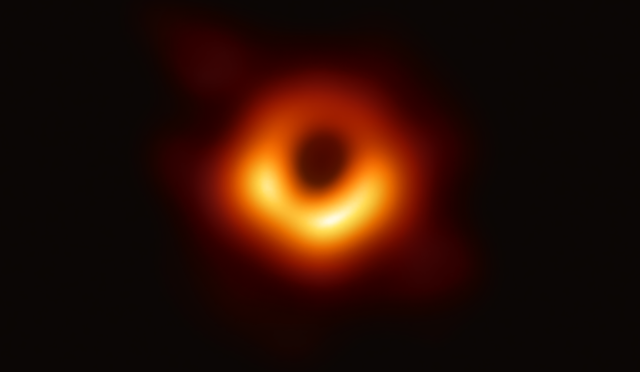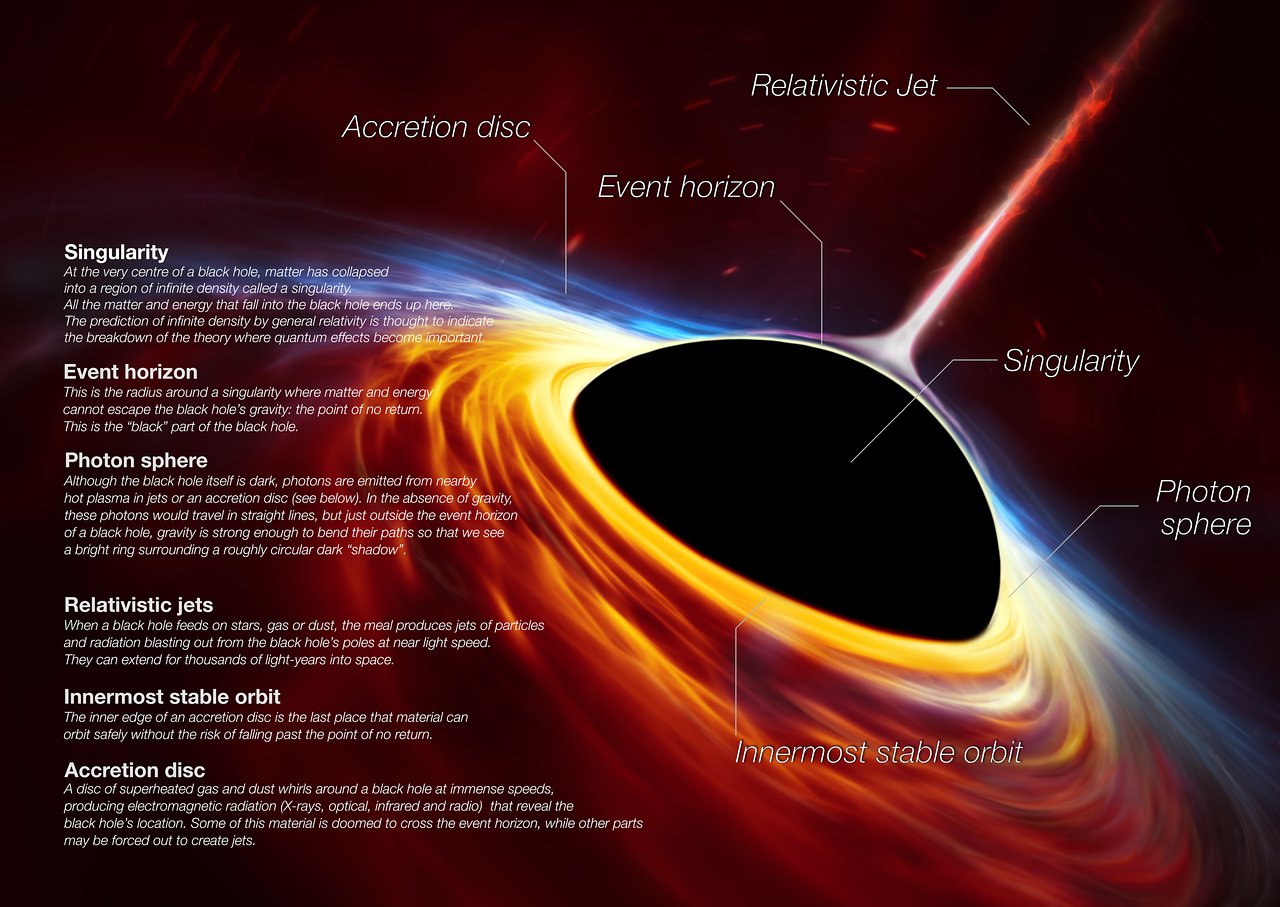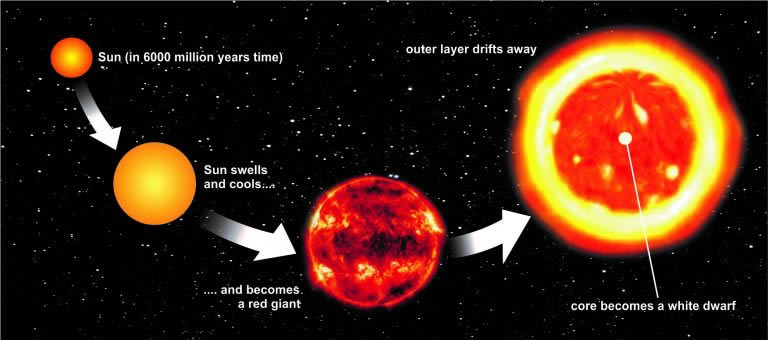What is a Black Hole?

A black hole is perhaps one of the strangest objects in our universe. It is in fact the remains of a massive dead star that has run out of fuel and collapsed.
Inside each star there are two main, competing processes that shape it :
- Fusion Reactions : These are similar to tiny hydrogen bombs going off and tend to make the star bigger. (hydrogen is converted to helium)
- Gravity : At the same time, gravity tends to crunch all the solar material to the centre.
These two forces are balanced throughout a star’s life, which typically lasts for billions of years.
The size of a star is determined by this balance between gravity, making it smaller, and explosive forces, making it bigger, which shifts only at the end of a star’s life, when the ultimate fate of any star is determined by its mass.
What about Our Sun – Will it become a Black Hole ?
Here’s what happens to a star the size of our own Sun.
When nearly all the hydrogen is converted to helium, gravity will dominate and the Sun will collapse, ignite the nuclear ashes of helium, and fuse them into carbon.
The Sun will then expand to the size of the orbit of Mars, at which point it will be a red giant.
After a few million years, the helium will be all burned out, the red giant will collapse, and the Sun will become a cool cinder, called a black dwarf.
Our Sun will never be a supernova. It is just too small and so will never form a black hole.
How is Black Hole Formed ?

To form a black hole a start need to go supernova and for that to happen it needs to be more than 10x the mass of our Sun
To form a black hole a start need to go supernova and for that to happen it needs to be more than ten times the mass of our Sun.
Once nuclear fusion is done, the star’s gravity takes over, pulling material inward and compressing the core. This compression generates heat, eventually leading to a supernova explosion, which blasts material and radiation out into space.
But it doesn’t end there. The small, dense core remaining after the supernova keeps collapsing until its protons and electrons fuse together to create neutrons, and an extremely dense neutron star is born. If the star’s mass was even greater, the star not only caves in on itself, but the atoms that make up the star collapse so there are no empty spaces. What is left is a core that is highly compressed, very massive, and very dense. Gravitation is so strong near this core that even light can’t escape.
The particles within the core have collapsed and crushed themselves out of visible existence. The star disappears from view and is now a black hole.








